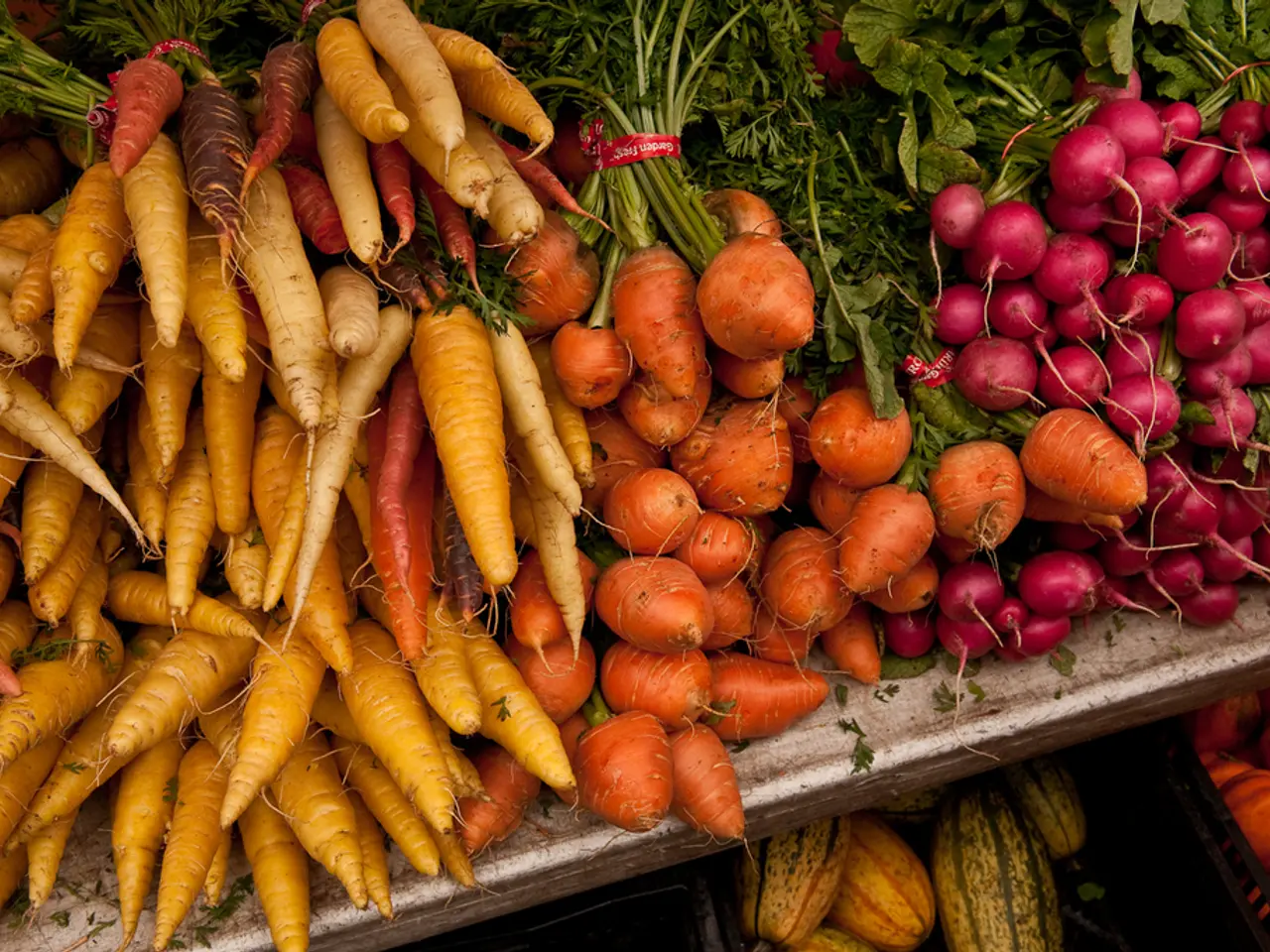Affordable and Profitable Desi Fruit: The Indian Hog Plum, Offering Increased Income, Nutrition, and Sustainable Rural Economic Development
Growing Indian Hog Plum: A Guide to Cultivating a Resilient Fruit Tree
The Indian Hog Plum (Spondias pinnata), a hardy and versatile fruit tree, is an ideal crop for organic and natural farming practices. This tropical and subtropical species thrives across most of India, particularly in USDA hardiness zones 9 to 11.
Climate and Soil
Indian Hog Plum thrives in warm climates, preferring a sheltered and sunny location to promote healthy growth. The tree prefers well-drained, slightly loamy soil but is adaptable and can grow in poor, rocky, or upland soils. It does well in soils that conserve moisture but do not remain waterlogged.
Propagation
The common and cost-effective method of propagating Indian Hog Plum is using mature stem cuttings. Cuttings should be about 1.5 to 2 feet long and at least 1 inch thick, collected from healthy mature branches during the dry season. The cuttings should be planted directly into prepared soil or nursery beds, with the base half buried in moist soil. Rooting occurs within a few weeks, and then the saplings may be transplanted to permanent locations at the start of the monsoon.
Planting
When planting as an orchard, space trees 6 to 8 meters apart. Closer spacing is possible if the tree is used as a live support for other crops like pepper. Planting is best done in early spring or at the beginning of the monsoon season.
Care and Maintenance
The species is hardy and requires minimal care once established. During the first year, occasional watering during dry spells and regular weeding promote faster growth. Mulching with organic material such as leaves or compost helps retain soil moisture and improves fertility. Applying farmyard manure or compost once per year near the tree base supports better yield. The tree is typically pest resistant; occasional monitoring for mealy bugs and fungal leaf spots is recommended with treatments such as neem oil spray or ash dusting if needed. Chemical fertilizers are generally unnecessary, making the tree suitable for organic cultivation.
Harvesting
The fruits usually ripen from May to July depending on the region. Harvesting should be timed when fruits are mature and ripe to ensure best flavor and nutritional value. Ripe fruits are sweet and sour in taste and can be eaten raw or used in chutneys and drinks. Tender green fruits begin to appear by June and are ideal for pickling.
Additional Benefits
The Indian Hog Plum tree is not only a productive fruit source but also offers other advantages. It tolerates some shade and can grow as a live support pole for climbing black pepper vines, saving money on buying concrete or wooden poles. The tree's fruit contains vitamin C, antioxidants, phenolics, and dietary fiber. In traditional Ayurvedic medicine, the Indian Hog Plum is used for treating indigestion, gas, and inflammation.
In summary, Indian Hog Plum is a resilient, low-maintenance tree adaptable to a range of soils and warm climates. By following the best practices for cultivation, farmers can enjoy a bountiful harvest of this nutritious and versatile fruit.
The Indian Hog Plum, not only offering a bountiful harvest of nutritious fruit, is also used in traditional Ayurvedic medicine for treating indigestion, gas, and inflammation. With its adaptability to various soils and warm climates, it can be cultivated not just for food-and-drink purposes but also integrated into a health-and-wellness lifestyle, given its medicinal properties. The tree's fruit, rich in vitamin C, antioxidants, phenolics, and dietary fiber, can be incorporated into a balanced lifestyle through cooking and nutrition.




